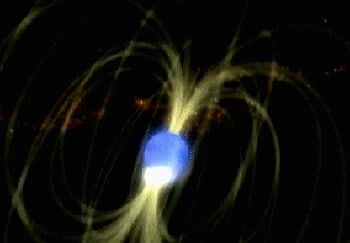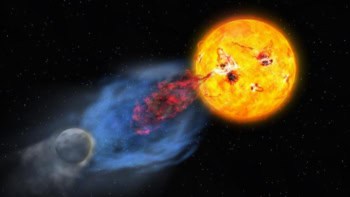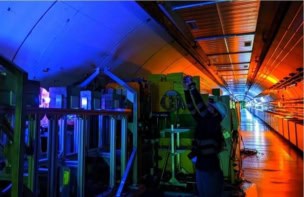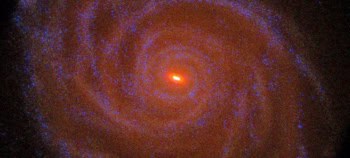Astronomers have detected the brightest ever event from outside our Solar System. The event occurred on 27 December last year and was so powerful that it was seen over a wide range of wavelengths by a number of space-based and ground-based telescopes. The event was brightest at gamma-ray wavelengths and has been linked to a magnetar - a spinning neutron star with a strong magnetic field - called SGR 1806-20 in the constellation Sagittarius about 50,000 light years away.

Although gamma-ray bursts are fairly common they continue to puzzle astrophysicists more than 30 years after they were first discovered. They are violent explosions that give off intense flashes of gamma rays that can last from a few milliseconds to about a hundred seconds. The initial burst of gamma rays is followed by an “afterglow” of longer wavelength radiation that can last for weeks or even years. Many astronomers believe that gamma-ray bursts happen when a massive star undergoes a supernova explosion at the end of its life and collapses to form a black hole.
Neutron stars are extremely dense stars that are heavier than the Sun but measure just tens of kilometres across. Magnetars are a special type of neutron star that have extremely strong magnetic fields — 1000 times stronger than ordinary neutron stars, and 1012 times stronger than the Earth’s magnetic field.
Of the 13 magnetars discovered to date, four are known as “soft-gamma ray repeaters” because they occasionally flare up and emit gamma-ray flashes. The event observed in December, which might have been caused by a quake in the star’s crust or an eruption on its surface, was one such event. It released more energy in a tenth of a second than the Sun emits in 150,000 years.
The blast was detected by several spacecraft, including NASA’s Swift (which was launched last November to study gamma-ray bursts), Wind and RHESSI, as well as ESA’s INTEGRAL. The afterglow was observed by ground-based radio telescopes, including the Very Large Array in New Mexico and the Australian Compact Array.
“This might be an once-in-a-lifetime event for astronomers, as well as for the neutron star,” said David Palmer of the Los Alamos National Laboratory, who is the lead author on a paper describing the Swift observation. “We know of only two other giant flares in the past 35 years, and the December event was 100 times more powerful.”
The explosion could solve the mystery of short-duration gamma-ray bursts, which last for less than two seconds, as opposed to the “long” events that can last for minutes. Hundreds of brief, high-energy flashes of radiation from far beyond our galaxy have been detected in recent years but astronomers are unsure of their exact origins.
“It now seems likely that a sizeable fraction of these events are magnetar flares in distant galaxies,” says Kevin Hurley of the University of California at Berkeley, lead author on a paper about the event that has been submitted to Nature.



